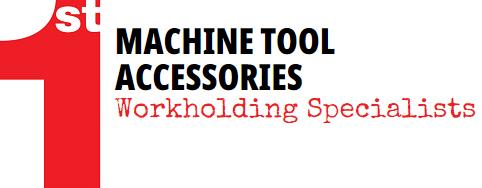 Add My Company
Add My Company
Versatile workholding ensures high productivity and accuracy at automation equipment manufacturer

Situated in Shipley, West Yorkshire, TecnAir designs and manufactures an extensive variety of pneumatic cylinders, valve assemblies, linear drives, handling equipment, controls and other products. They are used for the assembly of standard and special automation solutions requested by customers around the world, predominantly in the transport, automotive, railway, marine, off-shore, and semiconductor sectors.
What characterises this manufacturing activity above all else is the large amount of metalcutting involved to machine the component parts, as well as the extreme accuracy to which they must be machined. To this end, since the early 2000s the manufacturer has entrusted component clamping on its machining centres to Chick workholding products, manufactured in the US and supplied through sole UK agent 1st Machine Tool Accessories, Salisbury.
Steve Watson, CNC Operations Manager at TecnAir advised, “The accuracy of the sliding surfaces is critical on many of our components, so tolerances down to single-figure microns must to be held to ensure they are able to perform many millions of cycles faultlessly.
“Similarly, the finish on ground, polished or roller burnished sealing faces has to be very high, so the flatness and roughness of milled surfaces needs to be excellent to allow the low Ra values to be achieved as quickly as possible.
“Fixturing is crucial, as any movement or vibration cannot be tolerated. Chick products have underpinned the required level of accuracy in our factory for the past couple of decades and continue to do so.
“Not only is rigid workholding ensured, which incidentally also prolongs tool life, but a high level of interchangeability of the various Chick clamping units also helps to minimise investment in the equipment.”
Monthly quantities are machined in batches of from 200 to 2,000 for TecnAir’s own products, which account for 80% of turnover. Many thousands of component variants are involved, which are manufactured over a double shift pattern, five days a week plus at weekends if necessary. The remainder of throughput is subcontract design and production of parts for other companies, which involves machining anything from one-offs to a couple of hundred parts.
Supporting the prismatic machining operations on the shop floor are 15 Chick QwikLOK units, which are used on five vertical machining centres (VMCs), three from Haas and two from Yamazaki Mazak. Six of the units are dedicated to pendulum machining of relatively short pneumatic cylinder bodies from aluminium extrusion in three operations – rear end cap machining, front end cap machining, and inlet and outlet port machining – on a Mazak VTC-530. The resulting high-density workholding has the effect of maximising the use of the available machining area and reducing the overall number of tool changes needed for machining the components.
In addition, there are 11 MultiLOK towers deployed across three twin-pallet, 4-axis, horizontal machining centres (HMCs). They are a stand-alone Doosan HC400 and two Mazak HCN-4000s linked by a Palletech automated storage and retrieval system for 16 machine pallets. Materials processed are mainly aluminium and stainless steel, plus some brass, with castings accounting for 30% of throughput while the remainder is produced from either billet or extrusion.
The QwikLOKs use three jaws to secure two workpieces simultaneously against fixed central jaw by turning a single handle, in contrast to a traditional vice that is only able to clamp a single part. Opposing forces are cancelled and a reliable reference point is provided for machining. The Chick jaws create a pull-down action when they close, ensuring rigid workholding.
On every face of each four-sided MultiLOK tower, according to the size of component to be fixtured there is either a single-station or a dual-station jaw set, both of which employ Chick’s proprietary QwikChange snap on/snap off interface. Round and diamond pins in two bushed locating holes provide high clamping repeatability, leading to consistency of machining from one batch to the next.
Ideally, for maximum productivity and extended periods of unattended machining, components are set up on all four faces of a Multi-Lok. However, there are occasions when only two or three faces are employed, such as if components are longer than the tower width and overhang one or both sides.
Alternatively, instead of a jaw set, an aluminium faceplate can be snapped in seconds onto the QwikChange interface on any side of the towers. Repeatability of location is to within microns, providing what is essentially a zero-point pallet exchange system. The faceplate is pre-machined and may incorporate other workholding devices to configure bespoke fixturing arrangements for securing awkwardly shaped and/or multiple components quickly in a single set-up.
The decision to invest in a faceplate depends on the number of components to be produced and the frequency with which batches repeat. At TecnAir, a couple of dozen machined faceplates are stored for suitable jobs. An additional advantage of this approach is that workpieces can be fixtured offline, away from the machine tool, maximising its spindle uptime.
It is similarly possible to put a faceplate onto a QwikLOK on a VMC, if an application warrants it. Moreover, based on similar considerations regarding quantities of components involved and frequency of production, bespoke machined soft jaws can be held for use on the QwikLOKs to hold securely workpieces of difficult shape, often in multiples, such as round components that would tend to spin in a normal hard jaw set.
For more information on Versatile workholding ensures high productivity and accuracy at automation equipment manufacturer talk to 1st Machine Tool Accessories

